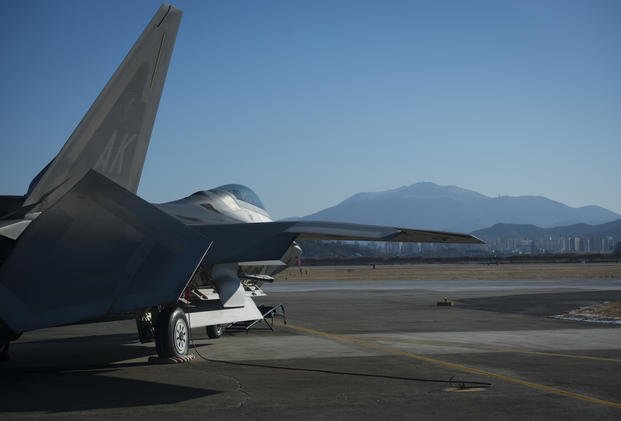The U.S. military will hold limited flight exercises next month with South Korea despite suspending its larger "Vigilant Ace" exercise for the second year in a row, according to the Defense Department.
"There are no plans to skip upcoming combined exercises," a defense official told Military.com in an email Tuesday. "We are proceeding with the Combined Flying Training Event as planned."
For nine years, the two countries hosted "Vigilant Ace," described as an exercise to "enhance interoperability between U.S. and [Republic of Korea] forces and ensure local peace and security," according to the U.S. Air Force.
In 2017, the U.S. sent its most advanced stealth fighters -- the F-22 Raptor and F-35 Joint Strike Fighter -- to the Pacific for the event.
Related: Pentagon Cancels Large-Scale Vigilant Ace Exercise with South Korea
A massive force totaling 230 aircraft participated in the U.S.-led drills at Osan Air Base, focusing on security and combat air power, the Air Force said at the time.
Two dozen stealth fighters, including six F-22 twin-engine jets, six F-35A single-engine JSF jets and a dozen F-35B vertical takeoff versions, were present for the aerial training that year. The aircraft flew with F-16 Fighting Falcons, F-15 Eagles, F/A-18 Hornets, A-10 Thunderbolt IIs and EA-18G Growlers, as well as Republic of Korea F-15K Slam Eagles and F-4 Phantom IIs, according to the service.
Last year, then-Defense Secretary Jim Mattis and his South Korean counterpart agreed to suspend Vigilant Ace in order "to give the diplomatic process every opportunity to continue" between North and South Korea, the Pentagon said at the time.
The Defense Department announced in June 2018, following the first Singapore summit between President Donald Trump and North Korea leader Kim Kim Jong-un, that the U.S. had suspended larger exercises, notably Ulchi Freedom Guardian -- which Trump at the time characterized as "war games." But it said smaller training efforts with South Korea would remain on the calendar.
In April, Pacific Air Force's 7th Air Force at Osan held a "Combined Flying Training Event" in place of its annual joint air training exercise, Max Thunder.
Aircrews and aircraft from the U.S., Republic of Korea (RoK) and Australia participated.
-- Oriana Pawlyk can be reached at oriana.pawlyk@military.com. Follow her on Twitter at @Oriana0214.
Read more: Iconic Stealth Attack Aircraft Is Headed to the Reagan Presidential Library













